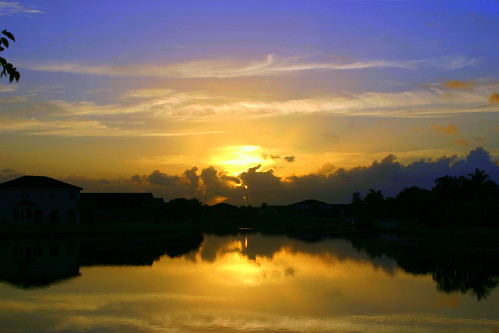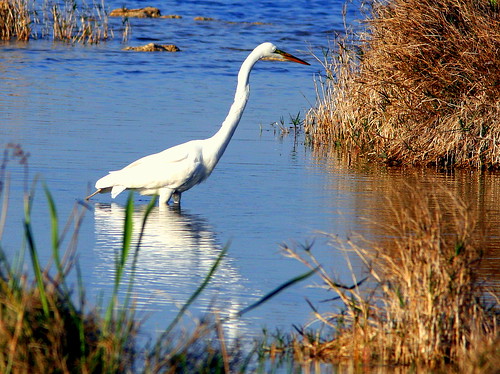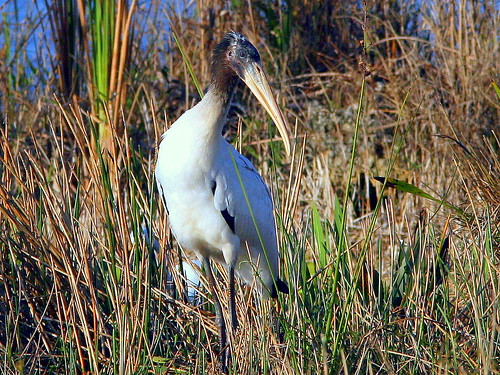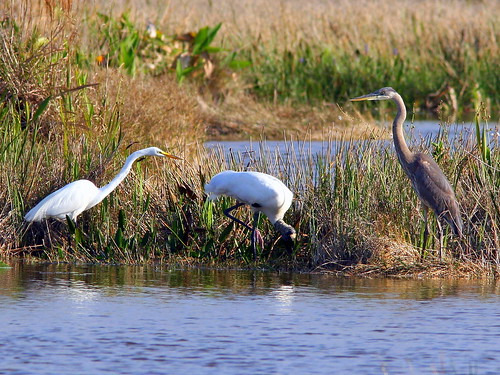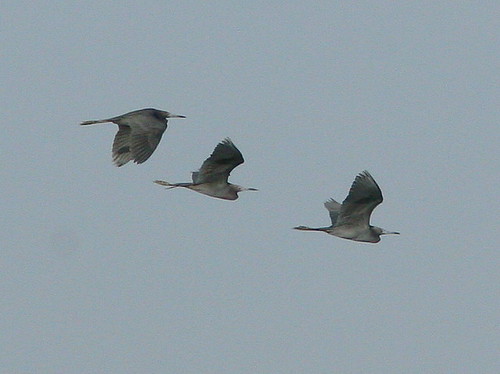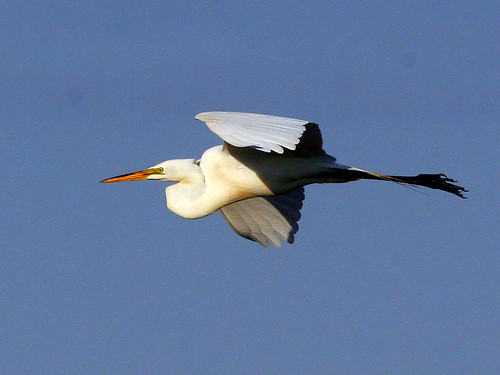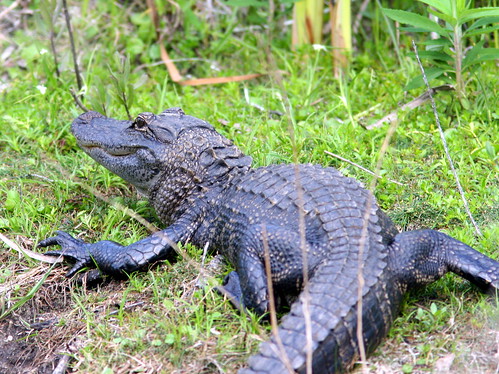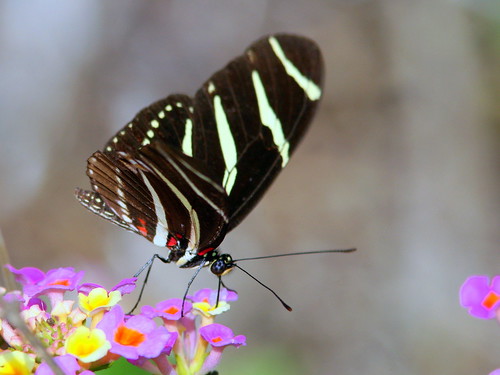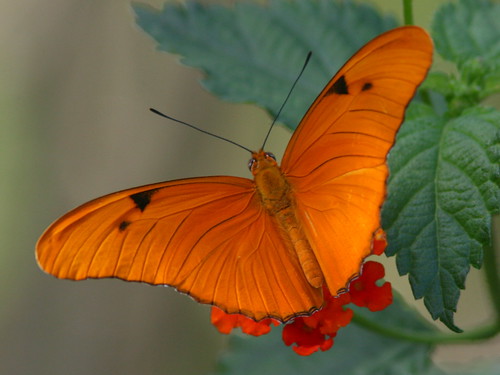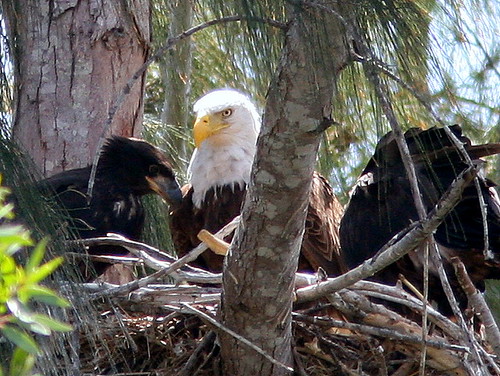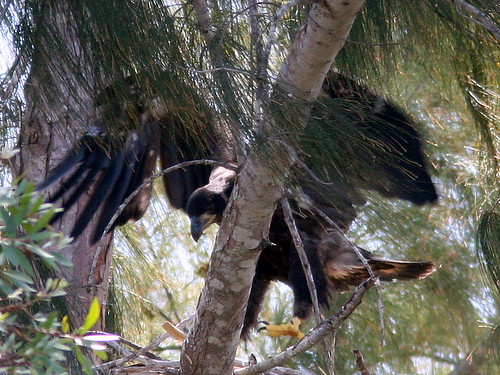Posted by: Ken @ 3:55 pm
| PEMBROKE PINES BALD EAGLES |
| Nest Watch Page |
| History of the Eagle Nest |
| Eagle Watch FORUM |
| FAQs |
My weekend leisure time was divided between walking our local birding “patch” and observing the local Bald Eagle nest. After one of the driest winters in history, the rains finally arrived.
Sunrise earlier in the week revealed a cloud bank hovering over the coastline, which later worked its way inland, and a cool front set off drenching rain each afternoon:
We were up early Saturday and, before the rains came again, took our “power walk” up the unpaved road that leads to the “patch,” I brought my camera, and after walking about a mile and a half I could not resist the urge to use it. Mary Lou stayed aerobic and walked home, while I took in the beauty hidden in an impoundment in the northeast portion of the West Miramr Environmentally Sensitive Area. [Note: a slide show of photos I have taken at this site is at the bottom of this post]
A Great Egret was reflected in the quiet water:
An immature Wood Stork eyed me warily:
The Great Egret joined an adult Wood Stork and a Great Blue Heron, to complete a pleasing assembly of long-legged waders:
In the distance, three Little Blue Herons flew over the lake:
The Great Egret departed in graceful flight (click on photo for a sequence of images):
I then followed a path that led along a small canal, into the depths of recovering Everglades to the south.
This small alligator (4-5 feet), normally easily frightened, let me approach quite closely:
I obtained an uncommon view of a Zebra Heliconian– the red at the base of its underwings is usually not visible:
The color of this male Julia Heliconian was outstandingly vivid:
Today I arrived at the eagle nest at 1:00 PM, just as the chicks were being fed. The chicks appear to be as big as their parents. They are now nine weeks old:
The chicks are trying their wings! Hope, the older one, leaps into the air:
After feeding the eaglets, the adult flew up to perch and clean its beak in a nearby Australian Pine:
Many Turkey Vultures circled the nest tree. Very likely, they smell the remains of prey that litter the ground beneath the nest, but are unable to penetrate the dense tangle of trees:













